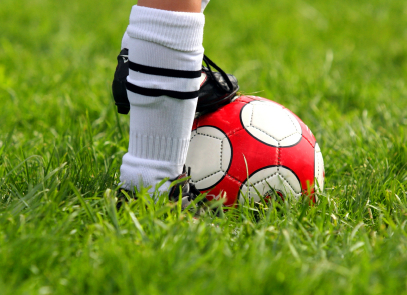 The right type of youth soccer shoes (a/k/a "cleats" or, as the Brits call them, "boots") depend on field conditions and type of field (grass, artificial, dirt). Cleat types
include molded cleats, detachable cleats, indoor soccer shoes and turf
shoes.
The right type of youth soccer shoes (a/k/a "cleats" or, as the Brits call them, "boots") depend on field conditions and type of field (grass, artificial, dirt). Cleat types
include molded cleats, detachable cleats, indoor soccer shoes and turf
shoes.
- Molded cleats have non-removable rubber or plastic cleats (most programs doe not allow metal cleats) on the soles and are used widely in youth programs, as they are safer than some other types of cleats. They are designed for use on all types of fields in varying weather conditions.
- Detachable cleats utilize hard plastic, metal tipped studs that can be removed and replaced. Usually used by more advanced players on dry or wet grass. Make sure that metal cleats are allowed; most programs don't allow them.
- Indoor soccer. turf shoes look more like a low-cut sneaker, utilize flat rubber bottoms and are used almost entirely on indoor soccer fields or artificial turf.
Cleats can cause problems in young players, especially ages 9-13, when there are not enough cleats on the heel. This can lead to excess pressure and heel pain. Look for shoes with multiple cleats on the heel to help alleviate this problem. In order to reduce knee and ankle injuries, it may help to choose shoes with shorter cleats on them, no more than a half inch long for younger players.
For more on buying athletic shoes for your child that fit properly, click here.








